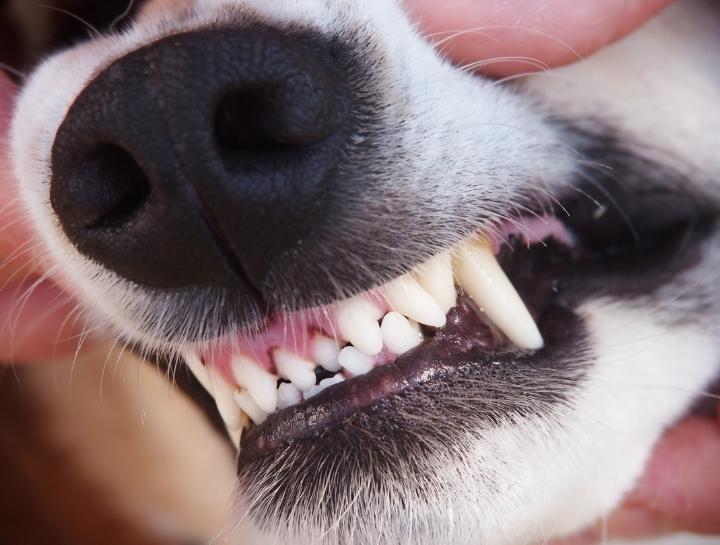Brushing Your Dog’s Teeth: How and Why?

ON THIS PAGE:
- Why Brush?—From Plaque to Disease
- Getting Started with Brushing
- Introducing the Toothbrush and Toothpaste
- How Often to Brush Your Pet’s Teeth
At Northeast Animal Hospital, we put a lot of emphasis on dental health, and brushing your dog's teeth at home plays a big part. For dogs, their mouth is like a hand, a way to pick up and explore things, and to play. It’s also a way to express their emotions and show their affection. Not to mention, they use their mouths to eat and drink. So, keeping a dog’s mouth healthy and pain free is of utmost importance in keeping a dog happy and helping them live a longer life.
A longer life? How does keeping a dog’s mouth healthy lead to a longer life? Can’t dogs live a long life even if they lose a few teeth? Let’s talk about why dogs lose teeth and how that can equate to poor health and even life-threatening diseases. Then we'll give you the easy steps to brushing your dog's teeth. You can also watch our video, "How to Brush Your Dog's Teeth".
Why Brush?—From Plaque to Disease
Just like in humans, dogs’ teeth accumulate plaque daily; that white sticky stuff that you can brush off with a toothbrush. But when that doesn’t happen, plaque hardens into tartar in about 48 hours. At that point, the only way it can be removed is with dentistry tools.
So, when tartar takes hold and the bacteria contained therein causes inflammation to the gums, it can progress to infections, abscesses, and bone loss–the very bone holding teeth in place. If the bone loss is severe enough, it can lead to jaw fractures. As if that wasn’t enough to affect a dog’s quality of life, periodontal disease may lead to internal disease as the bacteria travels through the bloodstream and causes heart, liver, or kidney disease.
In short, brushing a dog’s teeth is how owners can make the biggest impact on their pets’ dental and overall health. So now that you know why you need to brush your dog’s teeth, let’s talk about how to brush a dog’s teeth.
Getting Started with Brushing
It’s a lot easier to start brushing a dog’s teeth when they are a puppy. Even though they will lose those puppy teeth anyway, getting them used to having their face and mouth handled is an important way to set you both up for success. But if you have an adult dog and have never brushed their teeth, is it too late to start now? No! Better late than never.
Getting an adult dog to allow you to brush their teeth will be similar to starting out with a puppy, but it may take more patience. Start by getting your dog used to having their mouth handled; flip their lip, rub their teeth and gums with your finger, and open their mouth. Offer lots of praise and even a treat; a tasty morsel, their favorite toy or chew, a belly rub, or playtime with you—they all count as a treat.
Introducing the Toothbrush and Toothpaste
When your pet is accepting of having their mouth touched, show them the toothbrush and let them explore it. Licking and biting the bristles is totally acceptable. The toothbrush should have soft bristles–there are toothbrushes made just for pets, but even a small brush made for a child will work fine.
Next, apply a toothpaste made specifically for pets to the brush. Most will come in a chicken or beef flavor, but the flavor isn’t the only reason why you should never use a human toothpaste. Human toothpaste can contain ingredients that are not safe for pets–like xylitol, which is deadly to dogs. Pet toothpaste also doesn’t foam up, and your dog won’t have to spit and rinse afterwards.
Your dog may just want to bite at the bristles and lick the toothpaste off, but try to start using a gentle back and forth motion while they are busy chewing at the brush. Flip their lip back to avoid brushing their lip and pull their cheek back to reach the back teeth. Open their mouth and try to brush the insides of their teeth. You may not get all their teeth brushed in one session while they’re learning, but the goal is to get them used to the procedure. Soon, with patience and praise, your dog may even come running to you when they see the toothbrush!
How Often to Brush Your Dog’s Teeth
Just like in humans, frequency matters. We wouldn’t brush our teeth just once a week and expect a clean bill of health at our checkups. We recommend brushing a pet’s teeth once a day to remove that daily plaque growth. Brushing every other day can still help, but any less than that is not nearly as effective at keeping your dog’s mouth healthy.
Daily tooth brushing is just another way you can help your dog live a longer, happier, healthier life–and it takes less than two minutes!
